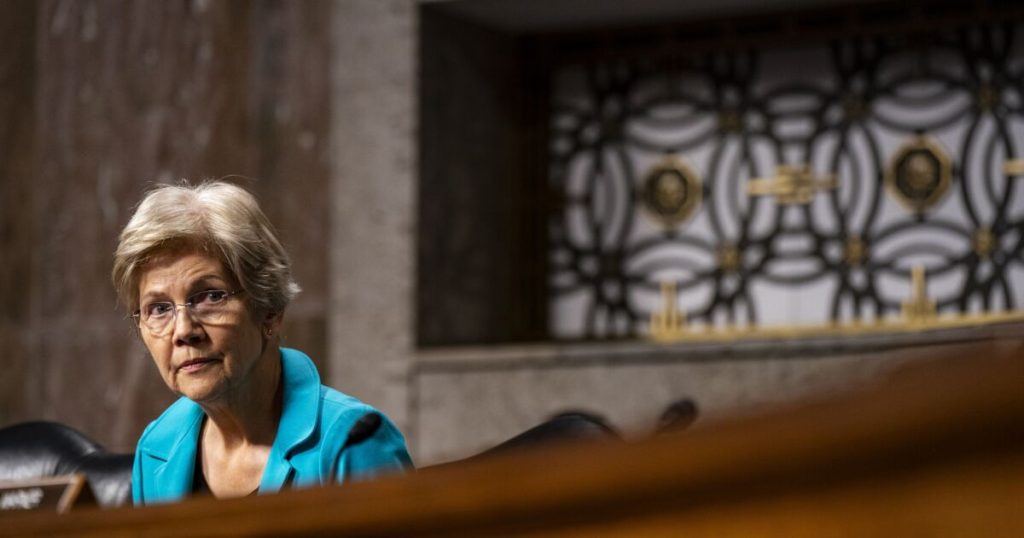Bloomberg News
The top ranking Democrat on the Senate Banking Committee is urging the Federal Reserve to activate a never-before-used financial stability tool in the face of growing economic uncertainty.
Sen. Elizabeth Warren, D-Mass., sent a
“Better capitalized banks lend more to businesses and households and are better positioned to buoy the economy in a recession — a reality growing increasingly likely in light of President Trump’s economic mismanagement,” Warren wrote, adding that ongoing bank regulatory reform efforts could be contributing to this heightened fragility. “The Fed is inexplicably moving in the opposite direction, weakening big bank safeguards at the worst possible moment. It must reverse course immediately.”
Created by the Fed in 2013 and fully adopted in 2016, the countercyclical capital buffer, abbreviated as CCyB, is a capital charge ranging from 0% to 2.5% that is imposed on banks with at least $250 billion of assets. According to its design, the charge is supposed to be increased as financial risks grow and reduced as those threats recede.
The Fed has never raised the CCyB above 0%. In her letter, Warren argued that now is the time to do so. She highlighted the fact that stock valuations have increased substantially since the market sell-off in April following the Trump administration’s tariff rollout despite weakening corporate profits. She also flagged dwindling credit spreads, rising corporate leverage levels and bubble-like equity valuations in the housing market.
“The Fed expects the CCyB will be activated ‘when systemic vulnerabilities are meaningfully above normal,'” Warren wrote. “Current conditions are exactly what the CCyB is designed to protect against.”
The letter also included several questions for Cook, including why the Fed has not held a vote on whether to increase the CCyB — something that is supposed to happen annually, according to the Fed’s own rule — in five years; when the Fed plans to vote on it this year; and for her views on several categories of emerging financial stability risk.
A Fed spokesperson confirmed the letter was received.
Financial stability hawks have been arguing for years that the CCyB should be activated, or at least voted upon. But the specifics of the tool’s design make it unclear when such a move is actually warranted.
Technically, the statute calling for the creation of a countercyclical regulatory regime notes that capital should increase “in times of economic expansion” and decrease during periods of contraction. As Warren notes in her letter, this is because, historically, periods of growth have often coincided with regulatory rollbacks.
But, the formal language of the Fed’s CCyB protocol — referred to as Regulation Q — states that “the Board expects that the CCyB will be activated when systemic vulnerabilities are meaningfully above normal” and that buffer would be removed or reduced “when the conditions that led to its activation abate or lessen.”
Skeptics of the CCyB say the Basel Committee on Banking Supervision, the international group that seeks a level oversight playing field across jurisdictions, recommends that capital rules not be tied to macroeconomic cycles.
In a February blog post, the Bank Policy Institute said the CCyB is “unworkable as designed.” It also notes that regulators have a poor track record when it comes to predicting periods of economic distress, pointing to the global financial crisis and the short-lived banking crisis of 2023 as episodes that were foreseeable but not foreseen.
BPI’s post concludes that the Fed should instead focus on its static capital rules to curtail risks in the banking system.
“The solution may simply be to set aside the idea that a macroprudential policymaker can see crises coming and stick with bespoke responses to each unique crisis when it occurs,” the post states.

